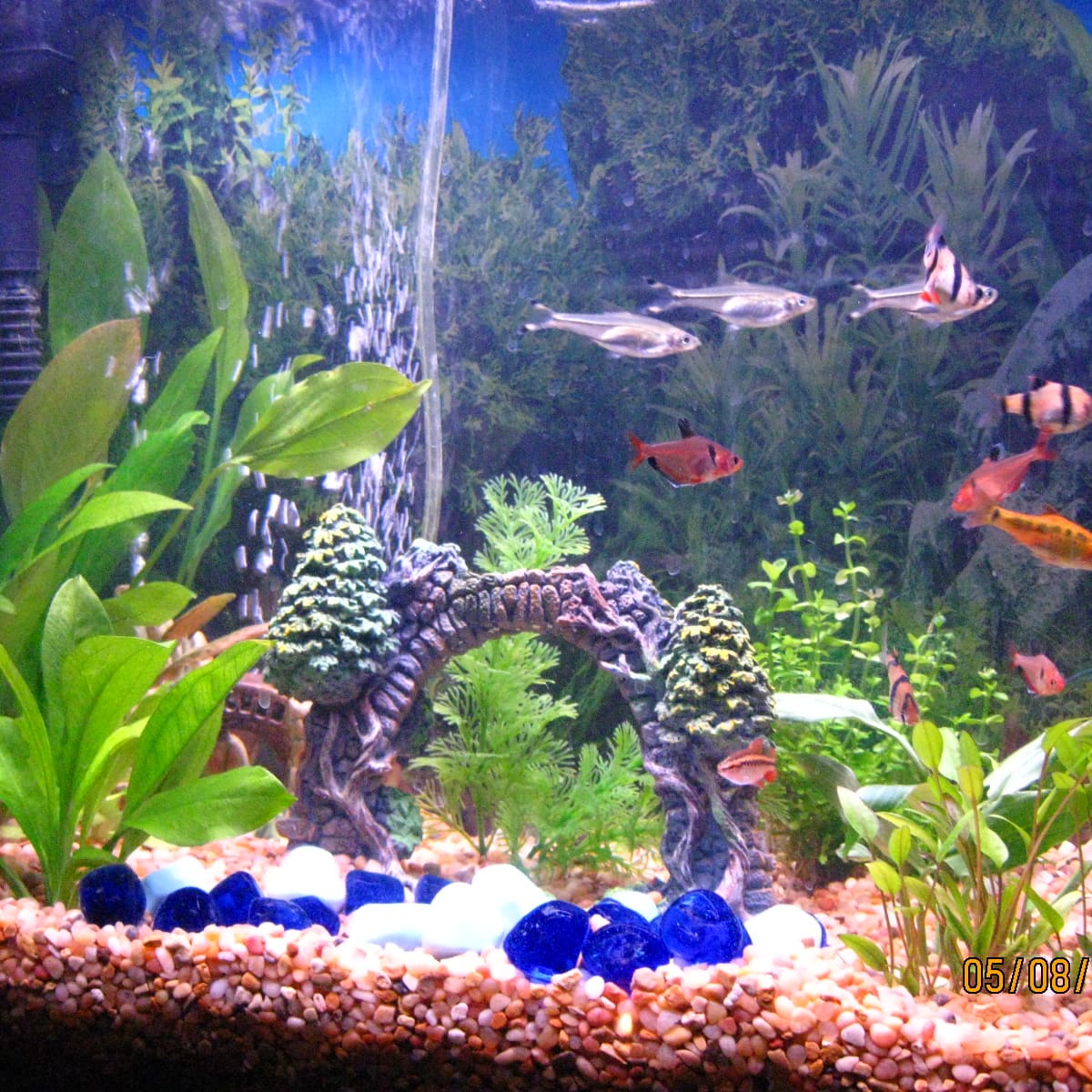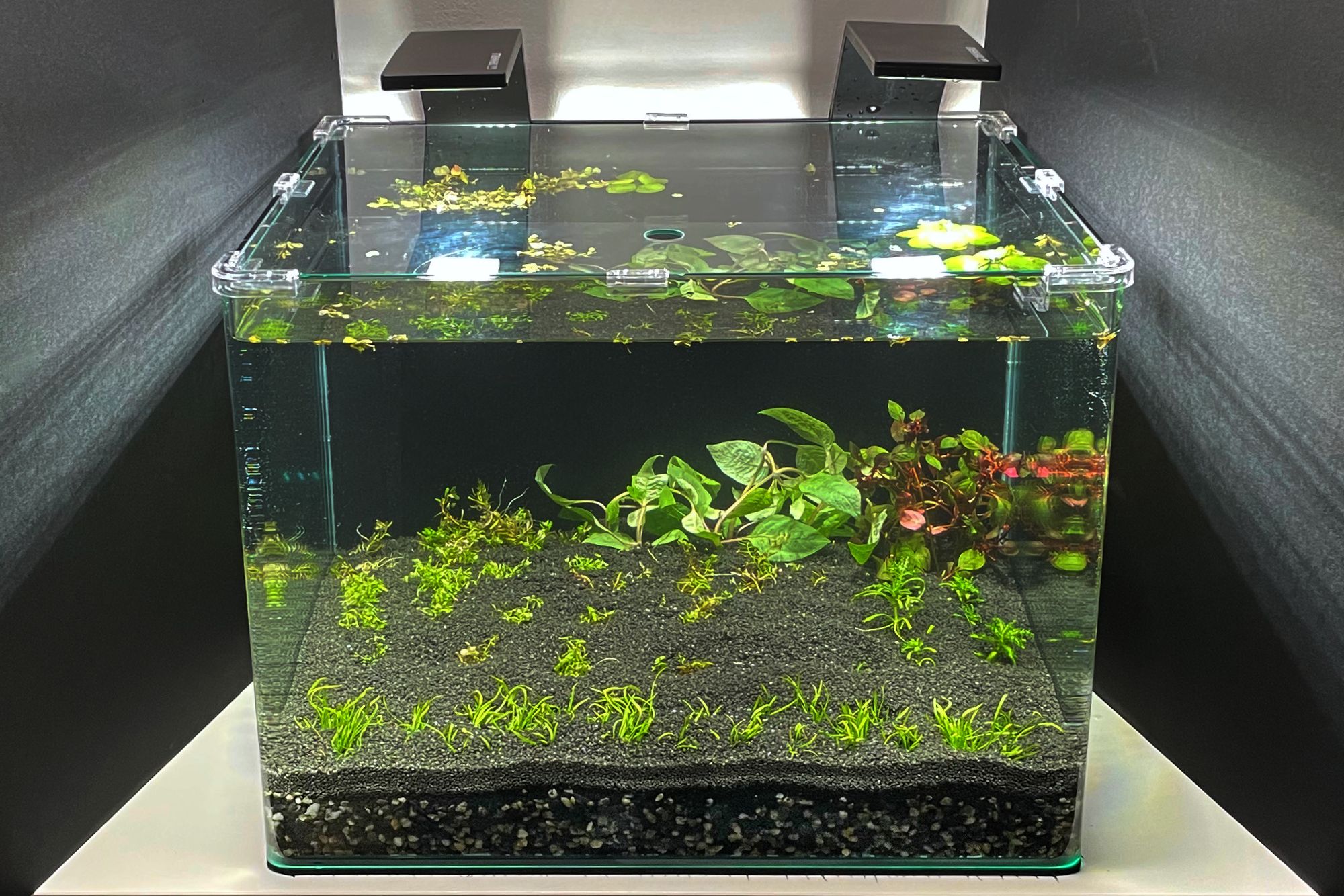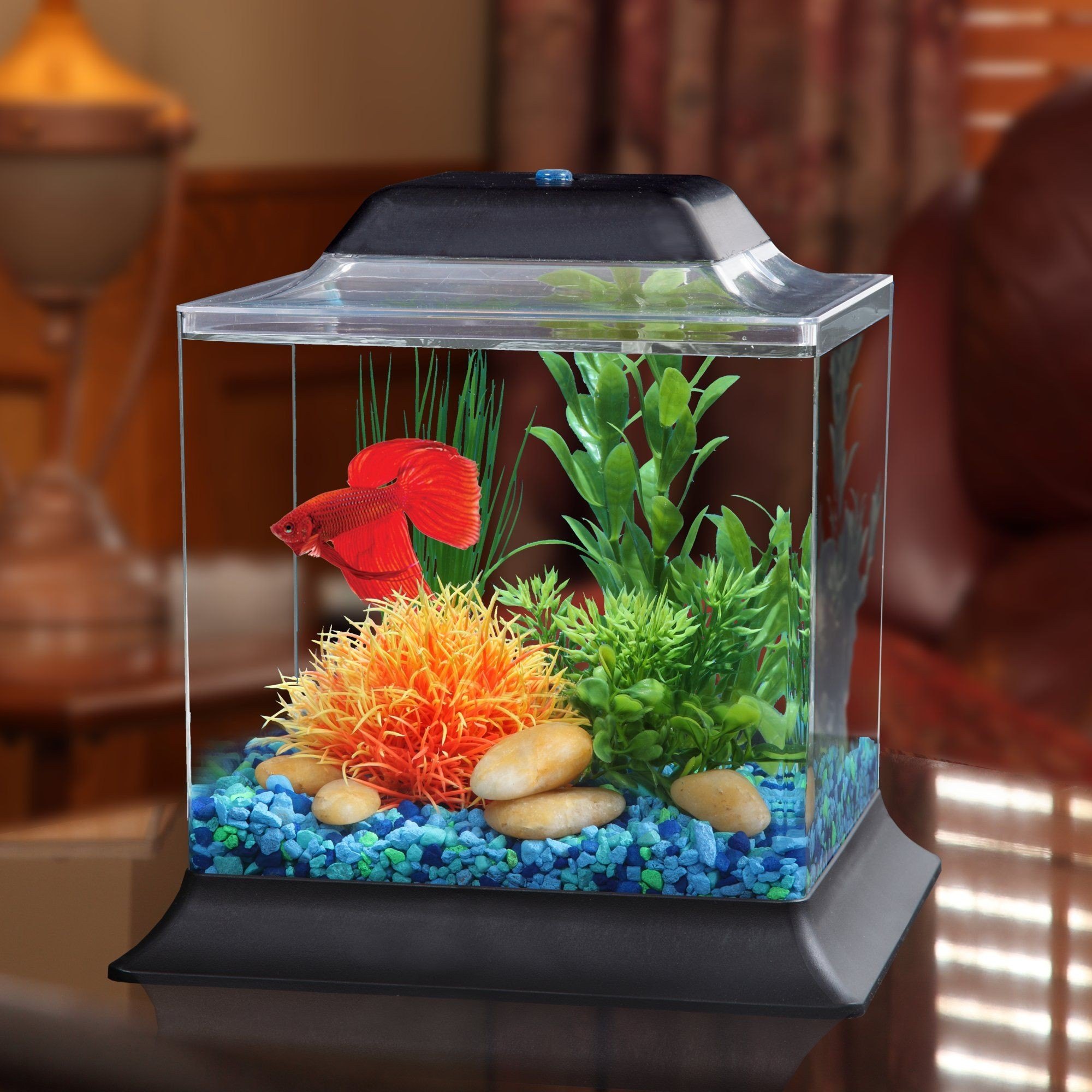Introduction: Embracing the Underwater Oasis
Diving into the world of fishkeeping is a thrilling adventure that introduces a microcosm of serenity and color into your living space. An aquarium, more than just a decorative piece, is a living ecosystem teeming with life and wonder. Whether you’re captivated by the graceful dance of neon tetras or the serene beauty of a planted aquascape, setting up your first fish tank requires careful planning and execution. This comprehensive guide will navigate you through the process, ensuring your aquatic journey begins on solid ground.

Section 1: Choosing the Right Aquarium
The Foundation of Aquatic Life
Selecting the perfect aquarium is the cornerstone of your fishkeeping journey. Consider factors such as space availability, species compatibility, and your personal preferences. Smaller tanks may be more manageable for beginners but limit the variety of fish you can keep. A standard 20-gallon tank strikes a balance between practicality and versatility, allowing for a modest yet diverse community of fish. Additionally, opt for a sturdy glass or acrylic construction, ensuring durability and clarity.
Section 2: Equipment Essentials
Essential Gear for a Thriving Ecosystem
To create a thriving underwater environment, several key pieces of equipment are indispensable:
- Filter: The heart of your aquarium, a filter removes harmful toxins, maintains water clarity, and promotes beneficial bacteria growth. Choose a filter suitable for your tank size, with options ranging from hang-on-back filters to canister filters.
- Heater: Essential for tropical fish, a reliable heater maintains a stable temperature, typically around 76-80°F (24-27°C), crucial for their health and well-being.
- Lighting: While basic lighting suffices for most freshwater setups, specialized lighting is necessary for planted tanks, promoting photosynthesis and enhancing colors.
- Substrate: More than just decoration, the right substrate supports plant growth and provides a natural habitat for beneficial bacteria.

Section 3: Aquascaping: Crafting Your Underwater World
Designing a Living Masterpiece
Aquascaping is the art of arranging aquatic plants, rocks, driftwood, and decorations to create a visually appealing and functional environment. Begin with a vision—whether it’s a naturalistic riverbed, a dense jungle of plants, or a minimalist setup. Consider the needs of your intended inhabitants when choosing plants and decorations. Soft sand or small gravel is gentle on delicate fish, while larger rocks and driftwood provide hiding spots and visual interest.
Section 4: Water Quality: The Key to Success
The Silent Guardian of Life
Maintaining optimal water parameters is paramount for fish health. Before introducing any life into your aquarium, cycle the tank. This process establishes a biological filter by cultivating beneficial bacteria that convert toxic ammonia into less harmful nitrites and eventually nitrates. Use a water testing kit regularly to monitor pH, ammonia, nitrite, nitrate, and hardness levels, adjusting with water changes and conditioner as needed. Aim for a pH range of 6.5 to 7.5 for most freshwater species.

Section 5: Introducing Fish: Populating Your Aquarium
Selecting and Acclimating Your Aquatic Companions
Choosing the right fish involves research into their adult size, temperament, dietary needs, and compatibility with other species. Start with hardy species like danios, platies, or corydoras to build your confidence and ecosystem stability. Always quarantine new arrivals for at least two weeks to prevent introducing diseases into your main tank. When adding fish, float their bag in the aquarium for 15 minutes to equalize temperatures, then gently introduce them using a drip method to avoid shocking their systems.
Section 6: Maintenance Routines: Sustaining Harmony
Nurturing a Balanced Ecosystem
Regular maintenance ensures a healthy and vibrant aquarium:
- Water Changes: Perform weekly 10-20% water changes to remove accumulated waste and replenish essential minerals.
- Cleaning: Regularly clean the glass, vacuum the substrate, and maintain filter media without disturbing beneficial bacteria.
- Feeding: Feed your fish a varied diet appropriate for their species, avoiding overfeeding which can lead to water quality issues.

Section 7: Troubleshooting Common Issues
Navigating Through Challenges
Encountering problems is part of the learning process. Common challenges include algae blooms, fish diseases, and imbalanced water parameters. Regular monitoring and timely intervention, such as adjusting feeding habits, increasing water changes, or using appropriate medications, can quickly rectify these issues.
Section 8: Advanced Techniques for Aquarists
Exploring New Depths in Fishkeeping As you gain experience and confidence in maintaining a healthy aquarium, you may find yourself eager to delve into more advanced practices. These can include breeding certain species, creating complex biotopes that mimic specific natural habitats, or even venturing into the realm of marine aquariums with saltwater species.
Breeding Fish: Witnessing the miracle of life in your aquarium is both fascinating and rewarding. Selecting compatible pairs, providing the right breeding triggers such as specific water conditions or plants, and preparing for fry care are all integral parts of successful fish breeding. Research the unique requirements of the species you wish to breed, as strategies can vastly differ.
Advanced Aquascaping: Elevate your aquascaping skills by exploring different styles like the Dutch, Nature, or Iwagumi layouts. These styles often involve meticulous planning, precise plant trimming, and the use of specialized hardscape materials. Joining online forums or attending aquascaping workshops can provide inspiration and technical knowledge to refine your craft.
Marine Aquariums: If you’re ready for a new challenge, setting up a marine aquarium introduces you to a whole new world of vibrant corals and exotic marine life. The complexity of maintaining salinity, alkalinity, and a stable marine ecosystem requires sophisticated equipment, including protein skimmers, advanced lighting systems, and precise water parameter control.

Section 9: Sustainability and Conservation Awareness
Caring for Our Aquatic World Fishkeeping can also serve as a platform for promoting environmental awareness and conservation efforts. Many aquarium enthusiasts participate in responsible sourcing, avoiding wild-caught species whenever possible to reduce impact on natural populations. Additionally, supporting organizations that rehabilitate injured marine life or restore damaged coral reefs contributes positively to global aquatic ecosystems.
Adopting a sustainable approach includes using energy-efficient equipment, recycling aquarium water responsibly, and even engaging in captive breeding programs for endangered species. By fostering an appreciation for aquatic biodiversity within our homes, we encourage others to value and protect our planet’s precious aquatic resources.
Conclusion: Embracing the Aquatic Lifestyle
Setting up your first fish tank is a rewarding endeavor that fosters patience, responsibility, and a deeper appreciation for nature’s intricate balance. As your aquatic world flourishes, remember that every bubble, every sway of a plant, and each swim pattern of your fish tells a story. With dedication and care, your aquarium becomes more than just a tank—it evolves into a living masterpiece, a tranquil haven that enriches your home and spirit. Dive in, and let the aquatic ambiance envelop you.










